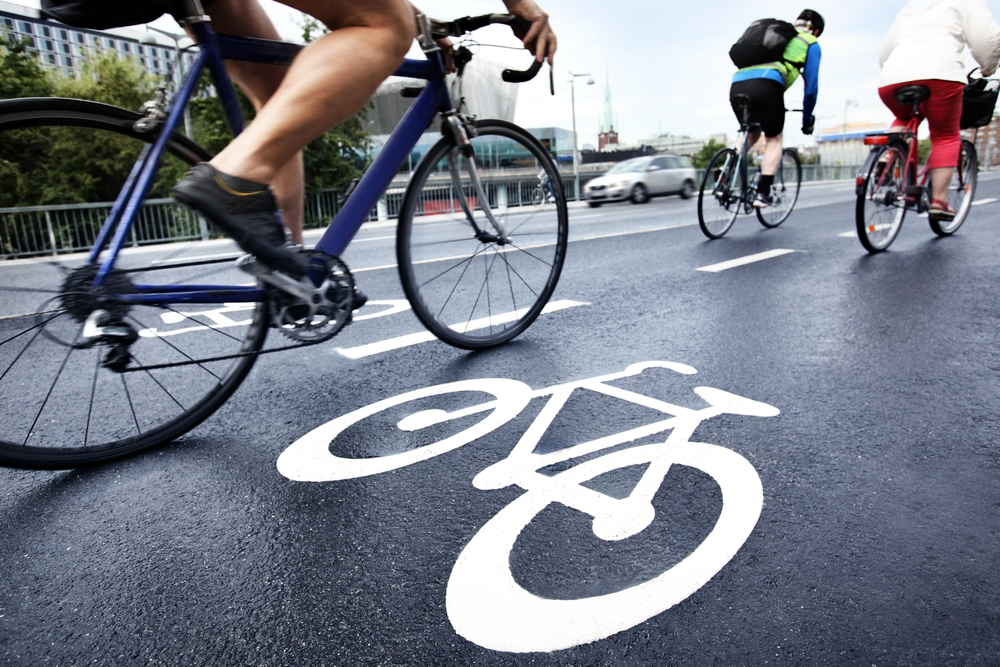
California has some of the most comprehensive bicycle laws in the United States, designed to protect cyclists while establishing clear rules for sharing the road with motor vehicles. Whether you’re a daily commuter or weekend recreational rider in Ventura County, knowing these laws can help prevent accidents and protect your legal rights if a crash occurs.
Many cyclists are surprised to learn that bicycles are considered vehicles under California law. This means bike riders have the same rights and responsibilities as car drivers, with some specific exceptions. You must follow traffic signals, stop signs, and yield right-of-way rules just like any other vehicle operator.
Where You Can and Cannot Ride
California Vehicle Code Section 21202 requires cyclists to ride as close to the right side of the roadway as practicable. However, this rule has important exceptions. You can move left when passing another cyclist, avoiding hazards, preparing for a left turn, or when the lane is too narrow for a vehicle to pass safely alongside your bicycle.
Riding on sidewalks is generally prohibited in business districts, but local municipalities can create their own sidewalk riding rules. Many Ventura County cities allow sidewalk riding in residential areas while prohibiting it downtown or in commercial zones. Always check local ordinances before riding on sidewalks.
Bike lanes are designated for bicycle use, but they’re not mandatory. You can leave a bike lane when it’s unsafe, blocked by debris, or when preparing to turn. Motor vehicles are prohibited from driving or parking in bike lanes, except when crossing them to enter driveways or make turns.
Safety Equipment Requirements
Helmet laws in California vary by age. Riders under 18 must wear properly fitted helmets at all times. While adults aren’t required to wear helmets on traditional bicycles, we strongly recommend them for safety reasons. The law is different for electric bicycles, where Class 3 eBike riders of all ages must wear helmets.
Your bicycle must have proper lighting when riding between sunset and sunrise. A white headlight visible from 300 feet and a red rear reflector visible from 500 feet are minimum requirements. Many cyclists add additional lights and reflective gear for better visibility.
Bicycles need working brakes capable of making the wheels skid on dry, level pavement. The brake requirement seems obvious, but we’ve handled cases where mechanical failures contributed to accidents.
Traffic Laws That Apply to Cyclists
Stop signs and traffic lights apply to bicycles just like motor vehicles. You cannot treat stop signs as yield signs or run red lights, even when no traffic appears present. These violations can result in tickets and may impact liability if an accident occurs.
When riding with others, California law prohibits riding more than two abreast unless you’re on a designated bike path. Single file riding is required when faster traffic approaches from behind. Group rides must follow these formation rules to avoid blocking traffic unnecessarily.
Rights and Responsibilities on the Road
Motor vehicles must maintain at least three feet of clearance when passing cyclists. This “three-foot rule” gives bicycles important legal protection, but enforcement can be challenging. As your Ventura, CA bicycle accident lawyer, we often see cases where drivers claim they provided adequate space when physical evidence shows otherwise.
Cyclists have the right to use full traffic lanes when bike lanes aren’t available or when the lane is too narrow for safe sharing. This concept, called “taking the lane,” is legal but should be used judiciously to avoid creating dangerous situations.
Common Violations and Their Consequences
Riding under the influence of alcohol or drugs is illegal and carries the same penalties as DUI for motor vehicles. Bicycles are vehicles under California law, so standard impairment laws apply.
Using electronic devices while cycling is prohibited, just like driving. Texting, talking on handheld phones, or using other electronic devices can result in citations and create liability issues if accidents occur.
What to Do After an Accident
If you’re involved in a bicycle accident, California law requires you to stop and exchange information with other involved parties. Leaving the scene of an accident, even on a bicycle, can result in hit-and-run charges depending on the circumstances.
Document the accident scene, get contact information from witnesses, and seek medical attention even for seemingly minor injuries. Some bicycle accident injuries don’t show symptoms immediately but can become serious problems later.
Insurance companies often try to blame cyclists for accidents, even when motor vehicle drivers violated traffic laws. We’ve seen cases where drivers ran stop signs, failed to yield, or opened car doors without checking for cyclists, yet still attempted to shift blame to the bicycle rider.
Cohen Injury Law Group, P.C. handles bicycle accident cases throughout Ventura County and understands how California’s bicycle laws apply to accident liability. We work with accident reconstruction teams and medical professionals to build strong cases for injured cyclists.
If you’ve been injured in a bicycle accident, contact Cohen Injury Law Group, P.C. for a free consultation. We’ll review your case and help you understand how California’s bicycle laws protect your rights as a cyclist on the road.

